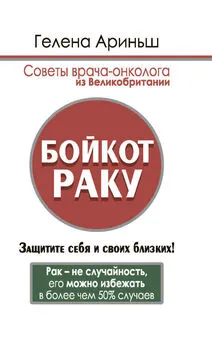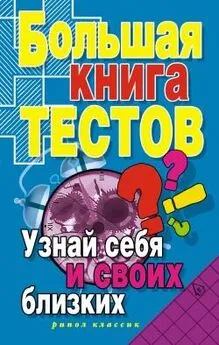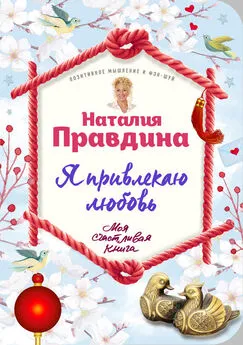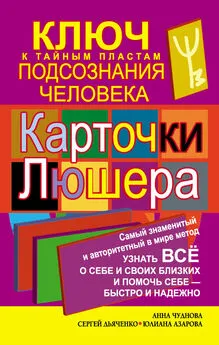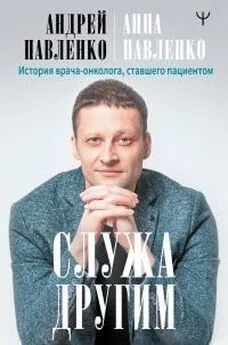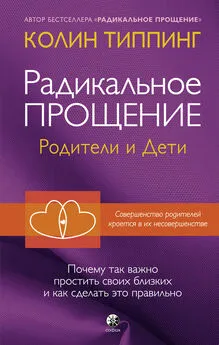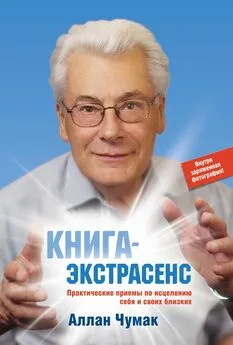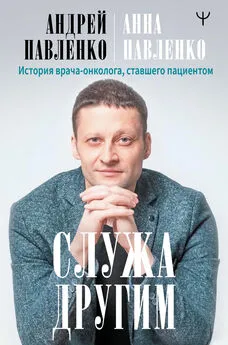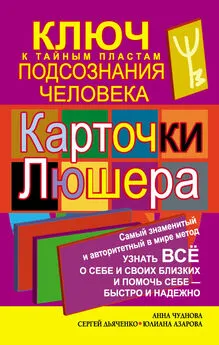Гелена Ариньш - Бойкот раку. Защитите себя и своих близких! Советы врача-онколога из Великобритании
- Название:Бойкот раку. Защитите себя и своих близких! Советы врача-онколога из Великобритании
- Автор:
- Жанр:
- Издательство:Издательство АСТ
- Год:2016
- Город:Москва
- ISBN:978-5-17-094058-5
- Рейтинг:
- Избранное:Добавить в избранное
-
Отзывы:
-
Ваша оценка:
Гелена Ариньш - Бойкот раку. Защитите себя и своих близких! Советы врача-онколога из Великобритании краткое содержание
В этой книге вы найдете все необходимые факты о том, как значительно снизить риск развития злокачественного процесса. Ежедневные мелочи, на которые мы порой не обращаем внимания, существенно влияют на наше здоровье. Ваша осведомленность может спасти жизнь вам и вашим близким!
В книге также приведена информация о профилактическом осмотре и методах ранней диагностики для выявления заболевания на ранней стадии, когда полное излечение вполне вероятно.
Бойкот раку. Защитите себя и своих близких! Советы врача-онколога из Великобритании - читать онлайн бесплатно полную версию (весь текст целиком)
Интервал:
Закладка:
221. Vimala S, Norhanom AW, Yadav M. Anti-tumour promoter activity in Malaysian ginger rhizobia used in traditional medicine. Br J Cancer. 1999; 80: 110–6.
222. Srivastava KC, Mustafa T. Ginger (Zingiber officinale ) and rheumatic disorders. Med Hypotheses. 1989; 29: 25–8.
223. Ghayur MN, Gilani AH. Pharmacological basis for the medicinal use of ginger in gastrointestinal disorders. Dig Dis Sci . 2005; 50: 1889–97.
224. Elkady AI, Abuzinadah OA, Baeshen NA, Rahmy TR. Differential control of growth, apoptotic activity, and gene expression in human breast cancer cells by extracts derived from medicinal herbs Zingiber officinale. J Biomed Biotechnol. 2012; 2012: 614356.
225. Hu R, Zhou P, Peng YB, Xu X, Ma J, Liu Q, Zhang L, Wen XD, Qi LW, Gao N, Li P. 6-Shogaol induces apoptosis in human hepatocellular carcinoma cells and exhibits anti-tumor activity in vivo through endoplasmic reticulum stress. PLoS One. 2012;7(6):e39664. doi: 10.1371/journal.pone.0039664. Epub 2012 Jun 29.
226. Hsu YL, Chen CY, Lin IP, Tsai EM, Kuo PL, Hou MF. 4-Shogaol, an active constituent of dietary ginger, inhibits metastasis of MDA-MB-231 human breast adenocarcinoma cells by decreasing the repression of NF-κ B/Snail on RKIP. J Agric Food Chem. 2012 Jan 25; 60(3): 852–61.
227. Karna P 1, Chagani S, Gundala SR, Rida PC, Asif G, Sharma V, Gupta MV, Aneja R. Benefits of whole ginger extract in prostate cancer. Br J Nutr. 2012 Feb; 107(4): 473–84.
228. Tan, H.T.; Rahman, R.A.; Gan, S.H.; Halim, A.S.; Hassan, S.A.; Sulaiman, S.A.; Kirnpal-Kaur, B. The antibacterial properties of Malaysian tualang honey against wound and enteric microorganisms in comparison to manuka honey. BMC Complement. Altern. Med . 2009 15; 9: 34.
229. Erejuwa, O. O.; Gurtu, S.; Sulaiman, S. A.; Ab Wahab, M. S.; Sirajudeen, K. N.; Salleh, M.S. Hypoglycemic and antioxidant effects of honey supplementation in streptozotocin-induced diabetic rats. Int J Vitam Nutr Res 2010; 80 (1): 74–82.
230. Erejuwa, O. O.; Sulaiman, S. A.; Ab Wahab, M. S.; Sirajudeen, K.N.; Salleh, S.; Gurtu, S. Honey supplementation in spontaneously hypertensive rats elicits antihypertensive effect via amelioration of renal oxidative stress. Oxid Med Cell Longev 2012; 2012: 374037
231. Kassim, M.; Achoui, M.; Mustafa, M. R.; Mohd, M. A.; Yusoff, K. M. Ellagic acid, phenolic acids, and flavonoids in Malaysian honey extracts demonstrate in vitro anti-inflammatory activity. Nutr Res 2010, 30 (9): 650–659.
232. Erejuwa, O.; Sulaiman, S.; Wahab, M.; Sirajudeen, K.; Salleh, M.; Gurtu, S. Hepatoprotective effect of tualang honey supplementation in streptozotocin-induced diabetic rats. Int J Appl Res Nat Prod 2012, 4, 37–41.
233. Erejuwa, O. O.; Sulaiman, S.A.; Ab Wahab, M. S. Honey – A Novel Antidiabetic Agent. Int J Biol Sci 2012, 8, 913–934.
234. Alvarez-Suarez, J. M.; Giampieri, F.; Battino, M. Honey as a source of dietary antioxidants: Structures, bioavailability and evidence of protective effects against human chronic diseases. Curr Med Chem 2013; 20 (5): 621–638.
235. White, J. W. Composition of honey. Honey: Compr. Surv . 1975, 157–206.
236. Hermosín, I.; Chicón, R.M.; Dolores Cabezudo, M. Free amino acid composition and botanical origin of honey. Food Chem . 2003, 83, 263–268.
237. Sergiel, I.; Pohl, P.; Biesaga, M. Characterisation of honeys according to their content of phenolic compounds using high performance liquid chromatography/tandem mass spectrometry. Food Chem . 2014, 145, 404–408.
238. Chan, C. W.; Deadman, B. J.; Manley-Harris, M.; Wilkins, A. L.; Alber, D. G.; Harry, E. Analysis of the flavonoid component of bioactive New Zealand manuka (Leptospermum scoparium) honey and the isolation, characterisation and synthesis of an unusual pyrrole. Food Chem . 2013, 141, 1772–1781.
239. Candiracci, M.; Piatti, E.; Dominguez-Barragan, M.; Garcia-Antras, D.; Morgado, B.; Ruano, D.; Gutierrez, J.F.; Parrado, J.; Castano, A . Anti-inflammatory activity of a honey flavonoid extract on lipopolysaccharide-activated N13 microglial cells. J. Agric . Food Chem 2012, 60, 12304–12311.
240. Xie, F.; Su, M.; Qiu, W.; Zhang, M.; Guo, Z.; Su, B.; Liu, J.; Li, X.; Zhou, L. Kaempferol promotes apoptosis in human bladder cancer cells by inducing the tumor suppressor, PTEN. Int J Mol Sci 2013, 14, 21215–21226.
241. Jaganathan, S.K. Growth inhibition by caffeic acid, one of the phenolic constituents of honey, in HCT 15 colon cancer cells . Sci World J 2012, 2012: 372345.
242. Samarghandian, S.; Afshari, J.T.; Davoodi, S . Chrysin reduces proliferation and induces apoptosis in the human prostate cancer cell line pc-3. Clinics 2011, 66, 1073–1079.
243. Galluzzo, P.; Martini, C.; Bulzomi, P.; Leone, S.; Bolli, A.; Pallottini, V.; Marino, M. Quercetin-induced apoptotic cascade in cancer cells: Antioxidant versus estrogen receptor alpha-dependent mechanisms. Mol Nutr Food Res 2009, 53, 699–708.
244. Fauzi, A. N.; Norazmi, M. N.; Yaacob, N. S. Tualang honey induces apoptosis and disrupts the mitochondrial membrane potential of human breast and cervical cancer cell lines. Food Chem Toxicol 2011; 49: 871–878.
245. Yaacob, N. S.; Nengsih, A.; Norazmi, M. N. Tualang honey promotes apoptotic cell death induced by tamoxifen in breast cancer cell lines. Evid Based Complement Altern Med 2013, 2013: 989841.
246. Jaganathan, S. K.; Mandal, S. M.; Jana, S. K.; Das, S.; Mandal, M . Studies on the phenolic profiling, anti-oxidant and cytotoxic activity of Indian honey: In vitro evaluation. Nat Prod Res 2010; 24: 1295–1306.
247. Orsolic, N.; Knezevic, A.; Sver, L.; Terzic, S.; Hackenberger, B. K.; Basic, I. Influence of honey bee products on transplantable murine tumours. Vet Comp Oncol 2003; 1:216–226.
248. Jubri, Z.; Narayanan, N. N. N.; Karim, N. A.; Ngah, W. Z. W. Antiproliferative activity and apoptosis induction by gelam honey on liver cancer cell line. Int J Appl Sci Technol 2012; 2: 135–141.
249. Ismail, W. I. W.; Abu, M. N.; Salleh, M. A. M.; Radzman, N. H. M.; Yusof, R. M.; Hassan, H. F. Insulin sensitivity enhancement of the mixture of Tinospora crispa and gelam (Melaleucacajuputi) honey and its antiproliferative activity on hepatocellular carcinoma, HepG2: A preliminary study. J Med Res Dev 2013; 2: 48–54.
250. Chanchao, C. Bioactivity of honey and propolis of Tetragonula Laeviceps in Thailand . In Bioactivity of honey and propolis of Tetragonula Laeviceps in Thailand.; In Pot-Honey. Springer: New York, NY, USA , 2013; pp. 495–505.
251. El-kott, A. F.; Kandeel, A. A.; El-Aziz, S. F. A.; Ribea, H.M. Anti-tumor effects of bee honey on PCNA and P53 expression in the rat hepatocarcinogenesis. Int J Cancer Res 2012; 8: 130–139.
252. Wen, C. T.; Hussein, S. Z.; Abdullah, S.; Karim, N. A.; Makpol, S.; Mohd, Y. A. Gelam and Nenas honeys inhibit proliferation of HT 29 colon cancer cells by inducing DNA damage and apoptosis while suppressing inflammation. Asian Pac J Cancer Prev 2012; 13: 1605–1610.
253. Jaganathan, S.; Mandal, M. Honey constituents and its apoptotic effect in colon cancer cells. Apiprod Apimed Sci 2009; 1: 29–36.
254. Oršolić, N.; Terzić, S.; Šver, L.; Bašić, I. Honey-bee products in prevention and/or therapy of murine transplantable tumours. J. Sci. Food Agric . 2005; 85: 363–370.
255. Orsolic, N.; Basic, I. Honey as a cancer-preventive agent. Period. Biol . 2004; 106: 397–401.
256. Mabrouk, G. M.; Moselhy, S. S.; Zohny, S. F.; Ali, E. M.; Helal, T. E.; Amin, A. A.; Khalifa, A. A. Inhibition of methylnitrosourea (MNU) induced oxidative stress and carcinogenesis by orally administered bee honey and Nigella grains in Sprague Dawely rats. J Exp Clin Cancer Res 2002; 21: 341–346.
257. Tsiapara, A. V.; Jaakkola, M.; Chinou, I.; Graikou, K.; Tolonen, T.; Virtanen, V.; Moutsatsou, P. Bioactivity of Greek honey extracts on breast cancer (MCF-7), prostate cancer (PC-3) and endometrial cancer (Ishikawa) cells: Profile analysis of extracts. Food Chem. 2009; 116: 702–708.
258. Samarghandian, S.; Afshari, J. T.; Davoodi, S . Honey induces apoptosis in renal cell carcinoma. Pharmacogn. Mag . 2011; 7: 46–52.
259. Pichichero, E.; Cicconi, R.; Mattei, M.; Muzi, M. G.; Canini, A. Acacia honey and chrysin reduce proliferation of melanoma cells through alterations in cell cycle progression. Int. J. Oncol . 2010; 37: 973–981.
260. Aliyu, M.; Odunola, O. A.; Farooq, A. D.; Rasheed, H.; Mesaik, A.M.; Choudhary, M.I.; Channa, I.S.; Khan, S. A.; Erukainure, O. L . Molecular mechanism of antiproliferation potential of Acacia honey on NCI-H460 cell line. Nutr. Cancer 2013; 65: 296–304.
261. Ghashm, A. A.; Othman, N. H.; Khattak, M. N.; Ismail, N. M.; Saini, R. Antiproliferative effect of tualang honey on oral squamous cell carcinoma and osteosarcoma cell lines. BMC Complement Altern Med 2010; 10: 49.
262. Morales, P.; Haza, A. I. Antiproliferative and apoptotic effects of spanish honeys. Pharmacogn Mag 2013; 9: 231–237.
263. Ghaffari, A.; Somi, M. H.; Safaiyan, A.; Modaresi, J.; Ostadrahimi, A. Honey and apoptosis in human gastric mucosa. Health Promot. Perspect . 2012; 2: 53–59.
264. Erejuwa OO1, Sulaiman SA2, Wahab MS3. Effects of honey and its mechanisms of action on the development and progression of cancer. Molecules. 2014 Feb 21;19(2):2497–522.
265. National Institute of Health State-of-the-science conference statement: multivitamin/mineral supplements and chronic diseae prevention. Ann Intern Med2006;145:364.
266. Lin J, Cook NR, Albert C, et al. Vitamins C and E and beta-carotene supplementation and cancer risk: a randomized controlled trial. J Natl Cancer Inst 2009; 101: 14.
267. Qiao YL, Dawsey SM, Kamangar F, Fan JH, Abnet CC, Sun XD, Johnson LL, Gail MH, Dong ZW, Yu B, Mark SD, Taylor PR. Total and cancer mortality after supplementation with vitamins and minerals: follow-up of the Linxian General Population Nutrition Intervention Trial. J Natl Cancer Inst. 2009 Apr 1; 101(7): 507–18.
268. Larsson SC, Hakansson N, Giovanucci E, Wolk A . Folate intake and pancreatic cancer incidence: a prospective study of Swedish women and men. J Natl Cancer Inst 2006; 15; 98(6): 407–13.
269. Larsson SC, Giovanucci E, Wolk A. Folate intake, MTHFR polymorphisms, and risk of esophageal, gastric, and pancreatic cancer: a meta-analysis. Gastroenterology 2006;131:1271.
270. Knekt P, Reunanen A, Takkunen H, et al . Body iron stores and risk of cancer. Int J Cancer 1994; 56:379.
Читать дальшеИнтервал:
Закладка:
